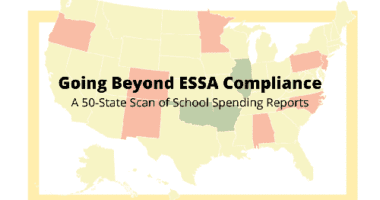Looking for Big Gains in NAEP? Watch These States
Much of the immediate attention after last week’s data release from the National Assessment of Educational Progress (NAEP) has focused on the big gains that Washington, D.C., and Tennessee showed between 2011 and 2013. While the gains should be celebrated as important markers of progress, it’s important to note that these states aren’t the only ones deserving attention. Several others demonstrated large gains for multiple grades, groups, and subjects from 2011 to 2013, including:
- Iowa, where reading scores rose in fourth and eighth grade for Latino students and in fourth grade for African American students.
- Indiana, which saw improvements in both reading and math for low-income, African American, and Latino fourth-graders.
- And California — yes, California — where eighth-grade reading scores rose seven points for low-income students, Latino students, and students overall in just two years.
And that’s just to name a few.
In other states, big gains are part of a longer trend stretching back to 2003. For example:
- New Jersey, where African American, Latino, and low-income eighth-graders have seen gains of more than 20 points in math and more than 10 points in reading in the last decade.
- Pennsylvania, where scores for low-income students have risen by double digits in fourth and eighth-grade reading and math. Scores also went up by more than 10 points for African American students in fourth-grade math and reading and eighth-grade math.
- Oklahoma and Wyoming, which both saw double-digit gains for Native students in fourth-grade reading and math.
- Or Florida, where low-income students’ scores have risen by at least 10 points in all four grades and subjects since 2003.
These states aren’t perfect — and neither are Tennessee and Washington, D.C. In all of them, gaps remain far too wide and performance — especially for students of color and low-income students — remains far too low. And often, a state showing improvement for one grade, subject, or group also shows stagnation or even declines for another.
But if we’re serious about understanding how to improve performance for students across the board — and across the nation — we must recognize big gains wherever they exist, acknowledge the hard work that’s producing these gains, and learn more about what’s happening in those places.










